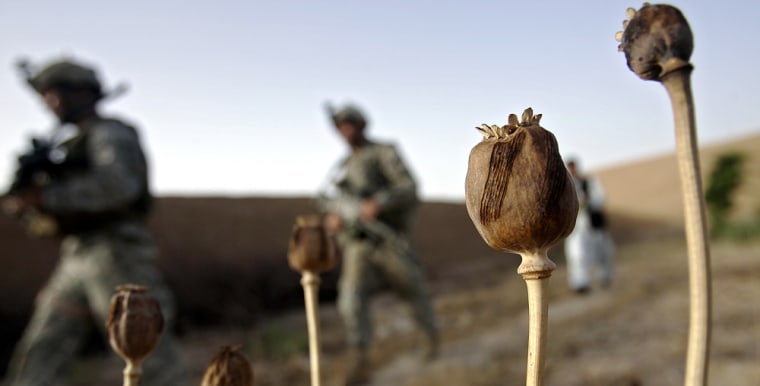The Bush administration on Thursday unveiled a multimillion-dollar strategy to fight Afghanistan’s soaring poppy production amid concerns of growing links with the Taliban insurgency.
The initiatives, described as an “enhanced carrot and stick approach” to supplement existing anti-drug programs, will vastly expand rewards for cutting poppy production and increase punishments for those who fail to do so, officials said.
Over the next few years, between $50 million to $60 million will be spent to offer development assistance to local Afghan officials who make inroads on cutting production, adding to the current $420 million in U.S. assistance that has boosted the number of poppy-free provinces but has failed to curb overall production.
At the same time, the United States and its NATO allies will further mesh counter-narcotics and counterinsurgency efforts to boost Afghan authorities’ ability to enforce eradication of poppy fields.
“We want to make sure that there are greater rewards for success and greater consequences for failure,” said Tom Schweich, the State Department’s top anti-drug official.
'A huge threat'
The release of the strategy was twice postponed since mid-July due to internal squabbling within the administration about elements of the program and how much of it to make public, officials said. They stressed, however, that all U.S. agencies involved agreed on the overall need to reduce the Afghan poppy crop.
“Opium, maybe second only to terror, is a huge threat to the future of Afghanistan,” said John Walters, who heads the White House Office of National Drug Control Policy.
U.N. figures to be released in September are expected to show that Afghanistan’s poppy production has risen by up to 15 percent since 2006 and that the country now accounts for 95 percent of the world’s total crop, 3 percentage points more than last year, say officials familiar with preliminary data.
In 2000, Afghanistan accounted for 70 percent of global opium production, compared with 52 percent a decade earlier. A State Department inspector general’s report last week noted that counternarcotics assistance is dwarfed by the estimated $38 billion street value of Afghanistan’s poppy crop, if it is all converted to heroin.
Afghan president to meet with Bush
The new rewards program, to be detailed in coming days by Afghan officials after President Hamid Karzai’s meeting with President Bush this week, will provide significant development aid for local officials who meet benchmarks for reducing poppy production in their jurisdictions.
The overall strategy also will promote Afghan efforts to reduce corruption and step up forcible eradication of poppy fields. In some places, notably in Helmand, farmers previously have refused incentive schemes to move to alternative crops, officials said.
Some contend such coercive measures have served only to alienate impoverished farmers. However, Schweich said they were essential to the objective.
